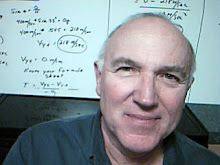Understanding the Brain.
In his Dual Coding Theory (1986), Albert Pavio asserted that linguistic and non-linguistic associations help create the best scenario for recall. Imagine walking along a wooden peer next to an ocean when your sense of smell detects an aroma from a time long past. Your brain fires into action to associate the smell with stored information long left un-retrieved, not forgotten, just not accessed. As the process of retrieval begins, other associations seem to pop up. Soon, your mind’s eye displays a pink cloud of fluffy fibers and your mouth begins to water as you recall the fluffy fibers as a sweet delight. Perhaps you begin to hear a calliope screaming out a merry tune as wooden horses bob in an endless circular path. Next to the horses is a stand where a man with a huge mustache peddles his famous Atlantic City Salt Water Taffy and peddlers in their little shops implore you to come in and take advantage of a great deal soon to be lost if you pass their shop by. It is a beautiful day and you capture the moment on your Brownie Starmite Camera. What a beautiful July day in 1957.
In an instant, a faint aroma has conjured up memories from fifty years earlier. Memories you thought lost forever. This kind of thing happens on a daily basis and the more associations we can tie to an experienced, the better the chance of retrieving that memory long after the original event has passed. As teachers, it is our job to create as many associations as we can, in hopes that our students will establish lasting and multiple recall networks. Based upon my recent studies, I have redoubled my efforts to stimulate as many senses as possible when teaching my physics class. I create human analogs of molecular models when studying solids, liquids and gases. I spin bicycle tires to simulate gyroscopes as student hold the handlebars to sense the effects. I race around the room to visualize the differences between velocity and acceleration. I fling metal spheres out our classroom window when we study projectile motion. Do these extraordinary efforts achieve greater recall? I think that without a doubt they do. Assessment scores seem to be higher and there seems to be a new level of interest. I’ve actually heard kids say my class is fun, which is not often heard in a math intensive physics course.
Behaviorist Learning Theory
This theory states that we condition our students through a “carrot and stick” approach to learning. In recent years, this theory has lost some support from those who consider it detrimental or harsh. I disagree. Each time our high school graduates apply for a scholarship, job, placement in a university, etc, they are either being accepted or rejected based upon some kind of standard. This is life and sometimes we have to reap the rewards of our efforts and decide whether we give up or try again. When we grade, A+ or F is a form of reward or rejection.
Cognitive Learning Theory
Cognitive Learning Theory states that long-term memory requires associations to provide the needed networking for memory recall. The theory states that seemingly disassociated snippets of information can enhance these networks as noted in my “cotton candy” example mentioned earlier. This theory forms the basis of my personal learning theory and accounts for my linguistic and non-linguistic teaching style. With regard to using technology as a means of facilitating cognitive learning, I remain guarded. I believe that educational games designed for the grammar school students may be useful, but similar tool may loose their benefit when applied to a 16 or 17 year old. Therefore, I use technology as a tool to enhance physics lesson, but generally do not use technology as a self tutor.
Constructionism
I teach physics in a technical high school. My students are hands on learners and as consequence constructionist learners. Visuals cues and demonstrations, as well as hands on labs are essential to the processing of information and I strive to include these activities as often as possible.
Social Learning
I find that my students tend to work best as teams when all students are at a common level or ability. It is essential, therefore, that the teams be assembled carefully and monitored closely. All to often, unless I am monitoring very closely, dominant personalities can lead the group in the wrong direction with convincing assertiveness and in the blink of an eye, all on the team are convinced that the earth is flat.
References
Paivio, A. (1986). Mental Representations. New York: Oxford University Press
skip to main |
skip to sidebar

A posting of issues that matter to teachers.

About Me
- John Chaco
- Teaching physics is my second career. My first career was engineering and while I enjoyed that career, teaching has been all I could have imagined and more. In fact, I often see many of my old colleagues and when I do, I start recruiting. We need good teachers. I live in Connecticut and teach at a high school in Milford. I am married with three children and six grand kids.



No comments:
Post a Comment